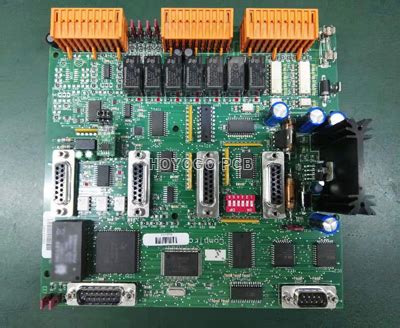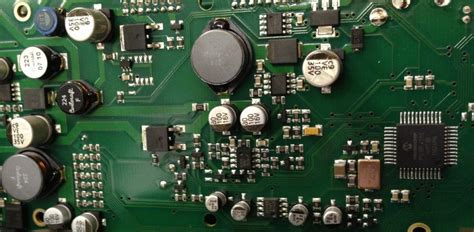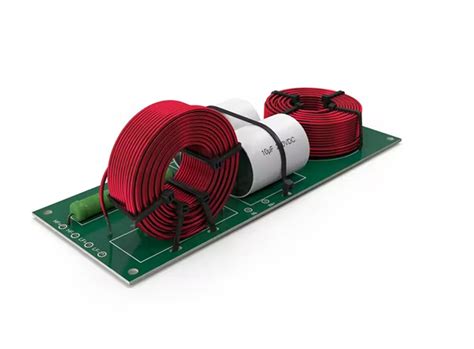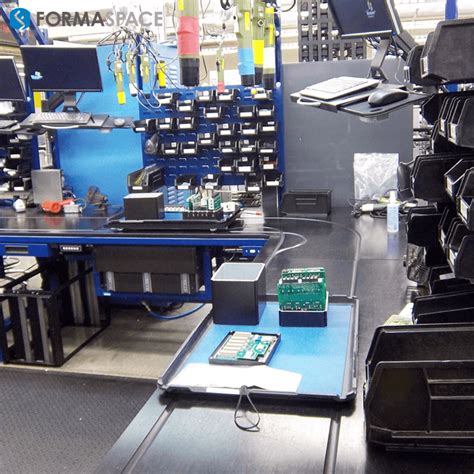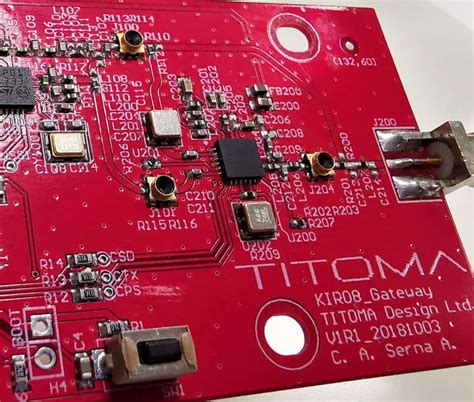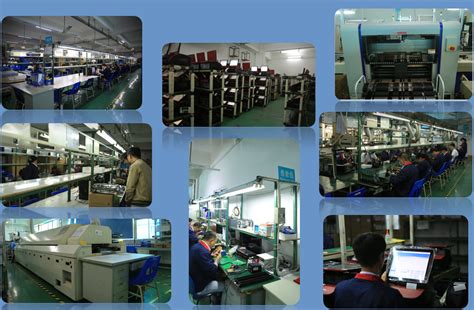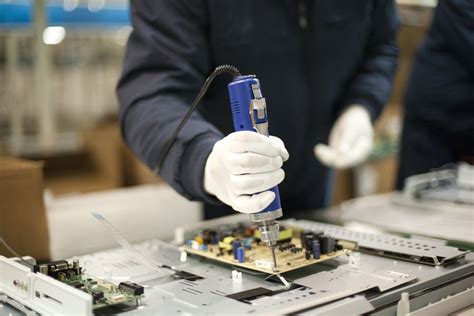Mastering Contract PCB Assembly: Your Guide to Success
Key Takeaways
Mastering contract PCB assembly involves understanding vital aspects that can enhance your project outcomes. PCB assembly or PCBA is not merely about producing printed circuit boards; it’s about creating reliable and efficient electronic units that meet industry standards. One of the most critical elements is selecting a suitable contract manufacturer who aligns with your quality and efficiency requirements. Throughout the PCB assembly process, employing best practices can significantly reduce common pitfalls, such as miscommunication and manufacturing delays. Moreover, maintaining rigorous quality control procedures ensures your products are fail-safe and perform optimally. Cost considerations must also be incorporated into your planning to avoid unexpected financial barriers later in the project. Therefore, incorporating these takeaways can streamline the overall assembly process and pave the way for a successful partnership with your chosen assembly partner in producing high-quality PCBA outcomes.
Understanding Contract PCB Assembly: An Overview
Contract PCB assembly has become a crucial element in the electronics manufacturing landscape. Businesses, regardless of size, increasingly seek out contract manufacturers to streamline their operations and leverage specialized expertise in Printed Circuit Board Assembly (PCBA). Understanding the foundational aspects of this process is vital for any organization looking to enhance their product offerings. A primary focus in contract PCB assembly is establishing clear communication between the design team and the manufacturing partner to ensure that specifications are met efficiently. This collaboration facilitates a smoother transition from concept to production and minimizes potential roadblocks. Additionally, having a firm grasp of industry standards helps businesses navigate regulatory requirements, ensuring that their products not only meet functionality needs but also comply with safety measures. Recognizing the importance of strategic partnerships in this context allows companies to optimize their processes, further solidifying their commitment to quality and innovation within the competitive market of PCBA.
Key Components of the PCB Assembly Process
The PCB assembly (or PCBA) process encompasses several critical components that ensure the successful creation of printed circuit boards. At the heart of this process is design, which involves transforming circuit schematics into a layout that meets both performance and manufacturability criteria. Material selection follows, where components, substrates, and soldering materials must be chosen based on the specific requirements of the end product.
| Component | Description |
|---|---|
| Design | Converting schematic diagrams to a manufacturable layout |
| Material Selection | Choosing components and substrates suitable for performance |
| Fabrication | Actual production of PCBs, including etching and drilling |
| Assembly | Placing components onto boards using automated or manual techniques |
Next comes fabrication, where the initial circuit board is manufactured. This step includes processes like etching copper layers and drilling holes for component placement. Finally, assembly involves placing electronic components onto the board, which can be done through techniques such as surface mount technology (SMT) or through-hole mounting.
“A well-executed PCB assembly process can greatly enhance product reliability and functionality.”
It’s also essential to incorporate testing at various stages to identify defects early on. Comprehensive testing protocols can prevent costly mistakes later in production by ensuring that each assembled board meets rigorous quality standards before moving to final integration. Understanding these key components will equip you with the knowledge necessary to navigate contract PCB assembly projects effectively, ultimately leading to enhanced efficiency and quality in your products.
Best Practices for Selecting a Contract Manufacturer
Choosing the right contract manufacturer for pcb assembly is a critical decision that can significantly impact the success of your project. First, it’s essential to evaluate the experience and expertise of potential partners in pcba, particularly in your specific industry. Manufacturers with a solid track record often possess specialized knowledge that can enhance product quality and efficiency. Additionally, assess their capabilities by examining their equipment and technology; advanced tools can facilitate more precise and effective assembly processes.
Another key consideration is the manufacturer’s commitment to quality control. Look for certifications such as ISO or IPC standards, which ensure that they adhere to strict production protocols. It is beneficial to ask potential partners about their quality assurance processes and how they handle defects or issues during production.
Communication plays a vital role in successful partnerships. Hill to understand how transparently they communicate regarding project timelines, disruptions, and changes during the assembly process. An open line fosters trust and allows for quicker resolutions when challenges arise.
Lastly, consider the cost structure offered by various manufacturers. While it may be tempting to choose based on price alone, weigh this factor against quality, service levels, and delivery capabilities to ensure long-term value in your contract PCB assembly processes. By following these best practices, you bolster your chances of a successful collaboration that meets your project requirements efficiently and effectively.
Ensuring Quality Control in PCB Assembly
Quality control in pcb assembly is paramount to achieving a reliable and functional end product. Establishing a robust quality management system is essential for both contract manufacturers and their clients. One key aspect of quality assurance is testing; implementing thorough testing procedures, such as Automated Optical Inspection (AOI) and functional testing, can significantly reduce defects. It is also crucial to maintain clear communication between the client and the manufacturer regarding specifications and quality expectations. This ensures both parties are aligned on the pcba standards needed for successful production.
Documentation plays a vital role; maintaining accurate records of all processes can help identify potential issues early on. Regular audits of the assembly process not only uphold adherence to industry standards but also foster a culture of continuous improvement within the manufacturing environment. Additionally, suppliers’ reliability should not be underestimated—enforcing strict criteria for selecting materials will enhance the overall quality of pcb assembly. Investing time in comprehensive quality control measures will ultimately lead to improved efficiency and durability in your projects, contributing to a successful outcome that meets or exceeds industry standards.
Cost Considerations and Budgeting for Your Project
When embarking on a project that involves contract PCB assembly, understanding the financial implications is crucial for successful execution. The primary factors influencing costs in PCB assembly include material expenses, labor costs, and manufacturing complexities. It’s essential to estimate these expenses accurately to maintain alignment with your overall budget. First, evaluating the quality of the raw materials is vital; opting for high-quality components may incur higher initial costs, but they can prevent costly failures down the line. Moreover, consider the scale of production; larger quantities often result in lower per-unit costs due to economies of scale. Additionally, labor rates can vary significantly based on geographical location and expertise level. Engaging with a reliable contract manufacturer who understands your needs can lead to more precise budgeting and better cost management strategies.
It’s also important to factor in potential hidden costs, such as testing and quality assurance processes that are often required before the final product is delivered. PCBA efficiency can hinge on meticulous planning; therefore, you should include contingency funds in your budget to cover unexpected issues that may arise during production. Keeping these considerations in mind will not only enhance your project’s feasibility but also ensure you achieve a balance between quality and cost-effectiveness in your PCB assembly endeavors.
Streamlining Communication with Your Assembly Partner
Establishing clear and effective communication with your contract PCB assembly partner is essential for the success of any project. With the complexities involved in pcba processes, miscommunications can lead to costly delays and errors. It is crucial to outline communication channels right from the outset. Regular updates and meetings should be scheduled to ensure that all parties are on the same page regarding project timelines, specifications, and expectations. Utilizing project management tools can facilitate seamless collaboration, allowing both sides to track progress and share feedback in real-time. Additionally, fostering a culture of transparency encourages open dialogue about potential challenges and solutions that may arise during the PCB assembly process. By building a strong relationship based on trust and clarity, you enhance not only efficiency but also the overall quality of the pcba, ensuring that your projects meet industry standards and client satisfaction.
Addressing Common Challenges in Contract PCB Assembly
In the world of contract PCB assembly, companies often encounter a range of challenges that can impact the overall success of their projects. One primary issue is ensuring effective communication with the contract manufacturer. Misunderstandings regarding specifications, timelines, or quality expectations can lead to significant delays and costly rework. Therefore, establishing clear channels and regular updates is crucial. Another common hurdle is the alignment on quality control standards; partners may have differing criteria which can affect the integrity of the pcb assembly process. It’s imperative to implement a stringent quality assurance protocol from the outset to bridge these gaps. Additionally, managing costs can pose a real challenge. Unexpected expenses often arise due to design changes or sourcing materials, making it essential for teams to have a well-defined budget and contingency plans in place. By proactively addressing these challenges, companies can enhance their PCBA outcomes and better align with industry standards, ultimately ensuring that their projects are completed on time and within budget while maintaining exceptional quality.
Future Trends in PCB Assembly and Manufacturing
As the landscape of pcb assembly continues to evolve, several future trends are emerging that promise to reshape the industry. One crucial development is the increasing adoption of automation and advanced robotics in the pcba process. These technologies not only enhance precision but also significantly improve production speed, allowing manufacturers to meet growing demand without compromising quality. Moreover, the integration of artificial intelligence and machine learning is becoming more prevalent, enabling data-driven decision-making that can optimize assembly procedures and predict potential issues before they arise.
Sustainability is another key focus area for future pcb assembly practices. There is a notable shift towards eco-friendly materials and processes, as both manufacturers and clients increasingly prioritize environmental responsibility. The use of recyclable components and energy-efficient manufacturing practices not only aligns with regulatory standards but also caters to consumer demand for greener products.
Additionally, as electronic devices become more complex and compact, there is a rising trend towards miniaturization in pcba designs. This requires innovative assembly techniques that can handle intricate circuitry without sacrificing reliability. Consequently, research into new materials and soldering methods has gained momentum, addressing both performance and durability challenges.
Furthermore, globalization continues to influence pcba supply chains. While outsourcing remains common, manufacturers are now focusing on building localized partnerships to enhance flexibility and responsiveness to market changes. This trend reflects a balance between cost efficiency and quality assurance.
In summary, the future of pcb assembly lies at the intersection of technology advancement, sustainability, design innovation, and adaptive global strategies—factors that will dictate how manufacturers approach their projects in coming years.
Conclusion
In reflecting on the journey through contract PCB assembly, it’s clear that achieving success in PCB assembly requires a synthesis of thoughtful strategies and proactive measures. Engaging with a reliable contract manufacturer not only streamlines your production processes but also enhances the overall quality of your PCBA products. By prioritizing quality control throughout the assembly process, you mitigate risks and ensure that your components meet stringent industry standards. Furthermore, maintaining effective communication with your assembly partner is crucial; it fosters transparency and collaboration, allowing for adjustments based on project needs. As trends evolve in the realm of PCB assembly, staying informed about technological advancements and innovative practices can position your project at the forefront of efficiency. Emphasizing continual improvement will not only enhance your competitive edge but also pave the way for future projects to thrive within this fast-paced industry landscape.
FAQs
What is contract PCB assembly?
Contract PCB assembly (PCBA) refers to the outsourcing of the production of Printed Circuit Boards (PCBs) to specialized manufacturers who assemble electronic components onto the boards.
How can I ensure quality in my PCBA?
To ensure quality control in your PCB assembly, it’s important to select a reputable contract manufacturer, establish clear specifications, and conduct regular inspections throughout the assembly process.
What are the key considerations for choosing a contract manufacturer?
Key considerations include the manufacturer’s experience, capabilities, production capacities, certifications, and their commitment to quality assurance. It’s essential to assess their past projects and client reviews as well.
How do cost considerations affect my PCB assembly project?
Budgeting plays a critical role in PCBA projects. It’s imperative to balance cost with quality. Investing in reliable materials and labor may lead to better long-term outcomes than opting for cheaper alternatives.
What common challenges arise during PCB assembly?
Common challenges include miscommunications with manufacturers, delays in procurement of components, variations in quality between suppliers, and troubleshooting issues during the production phase.
What trends are currently shaping PCB assembly and manufacturing?
Current trends impacting PCB assembly include advancements in automation, increased focus on sustainability, miniaturization of components, and the incorporation of smart technologies within PCBs.
Explore More About PCB Assembly
For further insights into enhancing your PCB assembly processes, please click here.

